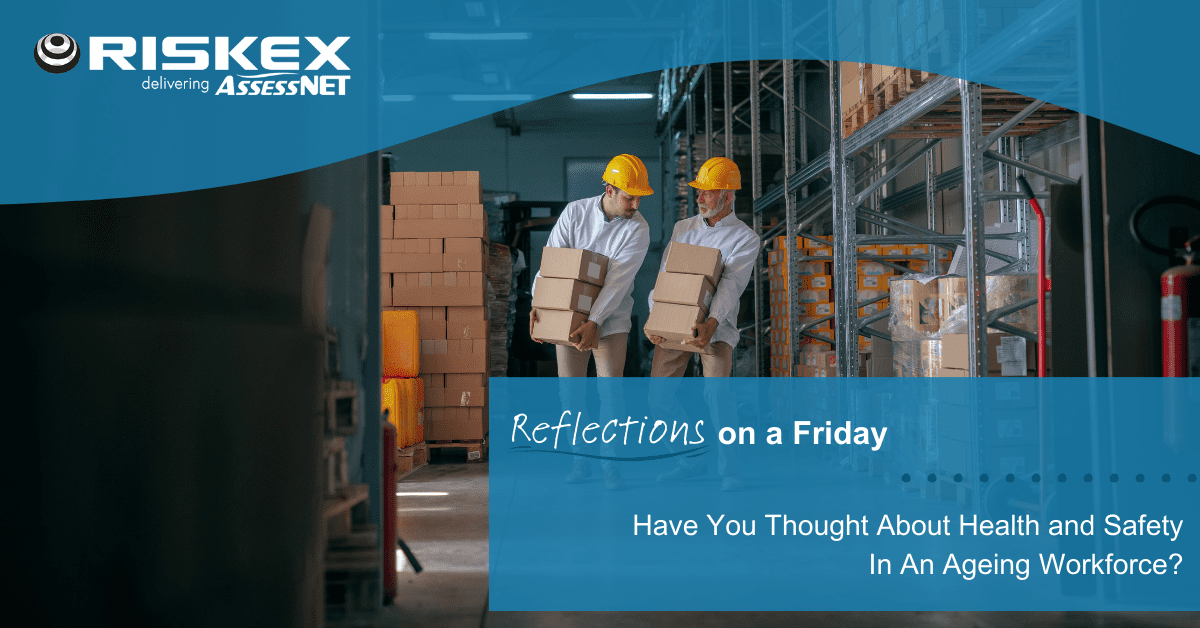
As the global workforce continues to evolve, one prominent demographic shift is the ageing of employees. With advancements in healthcare and a greater emphasis on work-life balance, many individuals are working longer than ever before. According to the ONS (Office for National Statistics), the employment rate of people aged 50 to 64 years has increased by 4% in the last 10 years and by 7.3% over the last 20 years. Businesses are therefore faced with the challenge of ensuring the health and safety of an ageing workforce.
Addressing the unique needs and concerns of older employees is essential for maintaining productivity and creating a positive work environment for all staff. Here, we will explore the key considerations for promoting health and safety among ageing workers.
Considerations for promoting health and safety among an ageing workforce
Ergonomics – Ageing can bring about physical changes, such as decreased muscle strength, flexibility, and vision. Changes to ergonomics could include adjustable furniture, adequate lighting, and other ergonomic tools. Regular ergonomic assessments can identify areas for improvement and tailor solutions to individual needs. Don’t assume that certain jobs are too physically demanding for older workers as many jobs are supported by technology that can absorb physical strain.
Health Promotion – Promoting employee health is crucial for preventing chronic conditions and maintaining vitality in older workers. Offering wellness programs that encompass physical activity, nutrition education, stress management, and smoking cessation support can significantly improve overall health outcomes.
Flexible Work Arrangements – Recognising the diverse needs of ageing employees, offering flexible work arrangements can enhance work-life balance and accommodate health-related concerns. Options that could be considered include flexible scheduling, hybrid working and phased retirement, which could allow older workers to manage their workload while prioritising their health needs. This flexibility can also boost morale and loyalty among employees.
Training and Skill Development – As employees age, their skills and knowledge remain valuable assets to the organisation. Investing in training and skill development programs ensures that older workers stay updated on industry advancements and technological changes. This not only enhances their job performance but also fosters a sense of empowerment and engagement in their roles. ‘The HSE recommends allowing more time to absorb training, for example through self-paced training.
Workplace Safety Protocols – Ageing workers may be more susceptible to workplace injuries due to reduced agility and slower reaction times. Implementing comprehensive safety protocols, including regular safety training, hazard assessments, and ergonomic modifications, is essential for minimising the risk of accidents and injuries.
Transitional Support – As employees approach retirement age, offering transitional support can facilitate a smooth transition out of the workforce. This may include retirement planning workshops, opportunities for mentorship or phased retirement. By supporting employees through this transition, organisations can maintain strong relationships and improve company culture.
In conclusion, prioritising the health and safety of an ageing workforce is essential for fostering a supportive and inclusive work environment. By implementing proactive measures and investing in the well-being of older workers will benefit individual employees as well as contributing to long-term success and sustainability.
For a free “Older Worker” Risk Assessment Template call us on 01908 915272
Latest News
Riskex Limited
BizSpace
Linford Forum
18 Rockingham Drive
Milton Keynes
Buckinghamshire
MK14 6LY
What3words reference:
Contact us
Make an enquiry:
Company No. 05174302
VAT No. 844 5092 22


